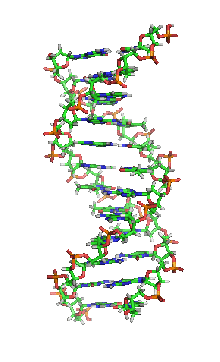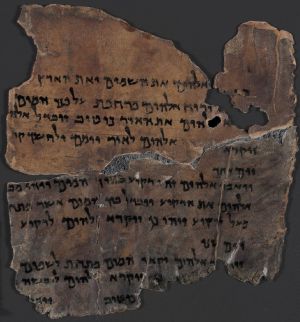Genomics of the Book

As part of the genomic revolution, scientists turned from the classic Sanger sequencing method to next-generation sequencing(NGS). This new kind of sequencing is both cheaper and faster than traditional sequencing methods, as a large number of DNA molecules can be sequenced in parallel.[1]. This has made DNA sequencing a more accessible technology for a number of fields, including that of book history. Genetic analysis allows researchers to discover the species and biological sex of the animals that provided parchment for a given book.
Methods of DNA Extraction
One challenge faced by those who wish to extract DNA from a book is that the DNA may not be present at a high enough concentration to be sequenced. Even when it is present, DNA extraction and sequencing is both time-intensive and expensive and requires equipment that may not be readily accessible. However, the improving efficacy of DNA sequencing methods does mean that even degraded DNA can often be successfully purified and used.
The recommended method for extracting DNA from the surface of a document involves using a PVC eraser. This is a non-invasive method in which the book is rubbed with an eraser, and the resulting eraser crumbs are then collected. An enzyme digest will then be performed to cut up the DNA molecules into smaller molecules that can then be extracted, purified, and analyzed via NGS instrumentation. It is important to note that when the same question can be answered with proteomics or genomics, it’s beneficial to turn to protein analysis, as it requires 20 ul of eraser crumbs instead of the 200 ul of eraser crumbs needed for genetic analysis.[2].
Prior to this method, genetic analysis often involved destroying part of the document. In one method, a 1-200 mm2 piece of parchment was excised with a sterile scalpel. This parchment then also went through a DNA extraction and purification procedure before being further amplified via polymerase chain reaction, PCR. These DNA fragments were then sequenced by a Sanger sequencing instrument. [3].
Uses of Genomics in Analysis of Parchment

The Dead Sea Scrolls (DSS) are ancient religious manuscripts; the majority of DSS fragments were found in caves near Qumran. These were recently analyzed using genomic analysis and will be used here to clearly exemplify how genetics can be used to provide further insight into book history.
First, analysis showed that the majority of scroll fragments came from three different animal groups: ovis (sheep), capra (goats), and bos (cattle). Within these groups, they were able to determine the exact species. For example, the sheep belonged to three distinct species: ovis aries, ovis orientalis mouflon, and ovis orientalis ophion. This is useful because different species are found in different geographical locations, so this could provide some insight into where different parts of the scroll were originally composed.
Several of the DSS fragments were actually obtained from antique dealers instead of straight from the excavation site. This means that historical records are missing the exact site in which some fragments were found, which this species analysis could help with. In this study, it was shown that fragments made from the differing species of sheep all originated from Qumran, as expected. However, fragments that came from cattle could not have been found in the Qumran caves or even in the surrounding Judean Desert, as cows were not local during the time in which these scrolls were written. The fragments that this finding refers to are 4Q70 and 4Q72b, which are now thought to originate from an entirely different geographical location. They were then transported to the area of the Judean Desert in which they were found.
Not only can genomic analysis differentiate between species, it can also differentiate between individual animals from the same species. This information is specifically useful for efforts to reconstruct the DSS. For example, fragments 28-33 were found to cluster together, which suggests that they could stem from the same sheet. Clusters are based off of similar nucleotide sequences in DNA molecules that were obtained from different sample scroll fragments.
Alternatively, fragments 25 and 28, which contain Deuteronomy and Exodus respectively, were found in different clusters. This suggests that they either originate from different scrolls, or if they come from the same scroll, they likely come from different sheets and thus different parchment sources. Another use of this clustering method refers to 4Q344 and 4Q59 frg. 25, which are two fragments that were also thought to originate from the Qumran caves. However, genetic analysis proved that these fragments were noticeably dissimilar to all of the other fragments analyzed in this study. Thus, genomic analysis is an excellent way to verify a document’s history. [4].
Difficulties with Genomics
As previously mentioned, one issue refers to inadequate concentrations of DNA in old parchment. However, there are several technologies that can amplify microscopic quantities of DNA and sequence them, so this is a less serious problem. Another major issue has to do with contamination of DNA samples. Contamination can be introduced in a variety ways.
One way refers to contamination from external sources during the storage process. A second way refers to contamination during the actual process of DNA sequencing. The scientist conducting the experiment is always at risk of introducing his or her own DNA into the sample being studied; this can be avoided by practicing careful sterile technique. In addition, several common laboratory reagents, such as buffers and enzyme digests, are used to extract and purify DNA. It was found that some of these reagents actually contain DNA from animals, including sheep and cows, which is an important confounding factor that must be taken into account when analyzing data. Otherwise, this could skew the genetic data and make it unreliable. This is especially important in cases where the DNA is amplified via PCR prior to being sequenced, as amplification will allow researchers to detect microscopic amounts of contamination from animal species. [5].
References
- ↑ Gambardella, S., Albano, V., Campopiano, R. et al. Short history of the “Genomic Revolution” and implication for neurological institutes. Riv Ital Med Lab 11, 1–13 (2015). https://doi.org/10.1007/s13631-014-0066-y.
- ↑ Fiddyment, S., Teasdale, M.D., Vnouček, J. et al. So you want to do biocodicology? A field guide to the biological analysis of parchment. Herit Sci 7, 35 (2019). https://doi.org/10.1186/s40494-019-0278-6
- ↑ Campana, M.G., Bower, M.A. et al. A flock of sheep, goats and cattle: Ancient DNA analysis reveals complexities of historical parchment manufacture. J. Archaeol. Sci. 37, 1317-1325 (2010). https://doi.org/10.1016/j.jas.2009.12.036.
- ↑ Sarit, A., Moran, N., et al. Illuminating Genetic Mysteries of the Dead Sea Scrolls. Cell. 181, 1218-1231 (2020). https://doi.org/10.1016/j.cell.2020.04.046.
- ↑ Leonard, J.A., Shanks, O. et al. Animal DNA in PCR reagents plague ancient DNA research. J. Archaeol. Sci. 34, 1361-1366 (2007). https://doi.org/10.1016/j.jas.2006.10.023.